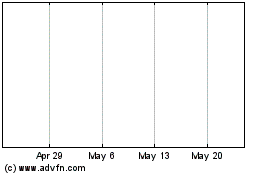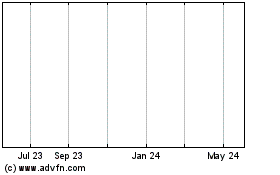U.K. lenders suffer the worst of the carnage, but peers in
Europe, U.S. aren't spared
By Margot Patrick And Christina Rexrode
LONDON -- The banking bloodbath continued Monday.
After being pummeled in the immediate aftermath of the U.K.'s
Brexit vote late last week, financial shares came under renewed
pressure in both Europe and the U.S. The selloff was spurred by a
range of concerns, from existential questions facing the European
Union to worries a long period of market uncertainty could
undermine fragile recoveries at many banks to fears tumbling
long-term bond yields will mean renewed pressure on profits.
The interest-rate outlook is particularly dire. Banks have
struggled to improve profits in the face of superlow, or in some
cases negative, yields. Now, Brexit looks set to make matters even
worse as investors seek shelter in government bonds, pushing prices
higher and yields lower. The yield on the 10-year U.S. Treasury
fell to 1.46% Monday. It had been 1.74% before Thursday's U.K. vote
to exit the EU.
Making matters worse: There is no clear path ahead for investors
in terms of how the crisis may be resolved or even for negotiations
between the EU and U.K. There is only political uncertainty.
Banks in the U.K. remained at the center of the tumult:
London-traded shares of Barclays PLC fell 17.4%, Royal Bank of
Scotland Group PLC slid 15.1% and Lloyds Banking Group PLC dropped
10.3%. The three banks have together shed about one-third of their
market value, or about GBP34 billion ($46.4 billion), since the
Brexit result.
Deutsche Bank analysts painted a gloomy picture for U.K. lenders
Monday. Loan growth will likely be lower, bad loans higher, and
dividends at greater risk as the dust settles from Thursday's
historic decision, analysts at the German bank said. "Political and
economic uncertainty is here to stay," they wrote.
Big losers in Europe included Credit Suisse, down 9.2%, France's
Société Générale, down 8.4% and Italy's UniCredit SpA, off 8.1%.
Most European banks are in stronger shape than they were before
2008's financial meltdown and subsequent eurozone crisis in terms
of their capital and ability to withstand shocks. Still, investors
are worried about the jolts to their businesses that could still
come from political turmoil, jittery markets and worried businesses
and consumers.
In Italy, the government, hoping to help struggling lenders
cope, is considering a EUR40 billion ($44.4 billion) capital
infusion into its banks, people familiar with the matter said. The
sector has suffered from chronically low profitability, thin
capital buffers and high costs.
One note of reassurance came from Spain's Banco Santander SA,
which on Monday reiterated financial targets for this year.
Santander generates around one-quarter of its net profit in the
U.K.
In the U.S., bank stocks fared only slightly better than their
European peers: Bank of America Corp. dropped 6.3%, Citigroup Inc.
fell 4.5% and Regions Financial Corp. was off 7.3%.
Bank of America appeared to be the subject of worry on multiple
fronts. It is considered particularly reliant on U.S. interest
rates rising because of its large base of U.S. deposits and loans.
Last week's Brexit referendum makes it far less likely the Federal
Reserve will raise interest rates again at its July meeting. Some
market participants believe it could even cut rates.
Bank of America's sensitivity to rising interest rates had
increased of late. In its most recent quarterly securities filing,
the bank calculated that if short- and long-term interest rates
rose by 1 percentage point, it would earn an extra $5.96 billion in
net interest income over the next 12 months. A year ago, the bank
calculated the benefit would be $4.55 billion.
"It's the flattening of the yield curve that Brexit caused,"
said Paul Muoio, who runs a commodity-trading adviser, Yellowhook
Capital, in New York. "That's the problem."
Aside from rates, Bank of America also has a large
capital-markets business that could be adversely impacted by market
tumult. And while its direct exposure to the U.K. is relatively
minor, it is enough to spook investors.
Analysts at Keefe, Bruyette & Woods estimated that Bank of
America gets about 6% of its revenue from its U.K. subsidiaries,
less than Goldman Sachs Group Inc.'s 18%, Morgan Stanley's 12% and
J.P. Morgan Chase & Co.'s 8%. According to regulatory filings,
Bank of America has more lending exposure to the U.K. than to any
nation other than the U.S., though U.K. lending still accounts for
only about 3% of total loans and leases.
Besides banks, investors also sought to make sense Monday of how
badly insurers and asset managers will be affected by a Brexit.
Asset managers have a morass of Brexit-related issues to sift
through including potentially sweeping regulatory change in
addition to fears of large outflows from their U.K. and European
stock and bond funds,
Money managers from BlackRock Inc , the world's largest asset
manager, to U.K. firm Hermès Investment Management said they may
have to make some changes to their London businesses, with industry
experts predicting many fund-management jobs could relocate to
other EU country capitals.
--Mark Cobley in London, Giovanni Legorano in Milan and
Jeannette Neumann in Madrid contributed to this article.
Write to Margot Patrick at margot.patrick@wsj.com
(END) Dow Jones Newswires
June 28, 2016 02:47 ET (06:47 GMT)
Copyright (c) 2016 Dow Jones & Company, Inc.
Henderson Group (ASX:HGG)
Historical Stock Chart
From Oct 2024 to Nov 2024

Henderson Group (ASX:HGG)
Historical Stock Chart
From Nov 2023 to Nov 2024


